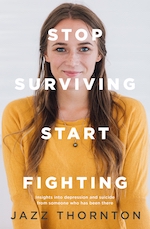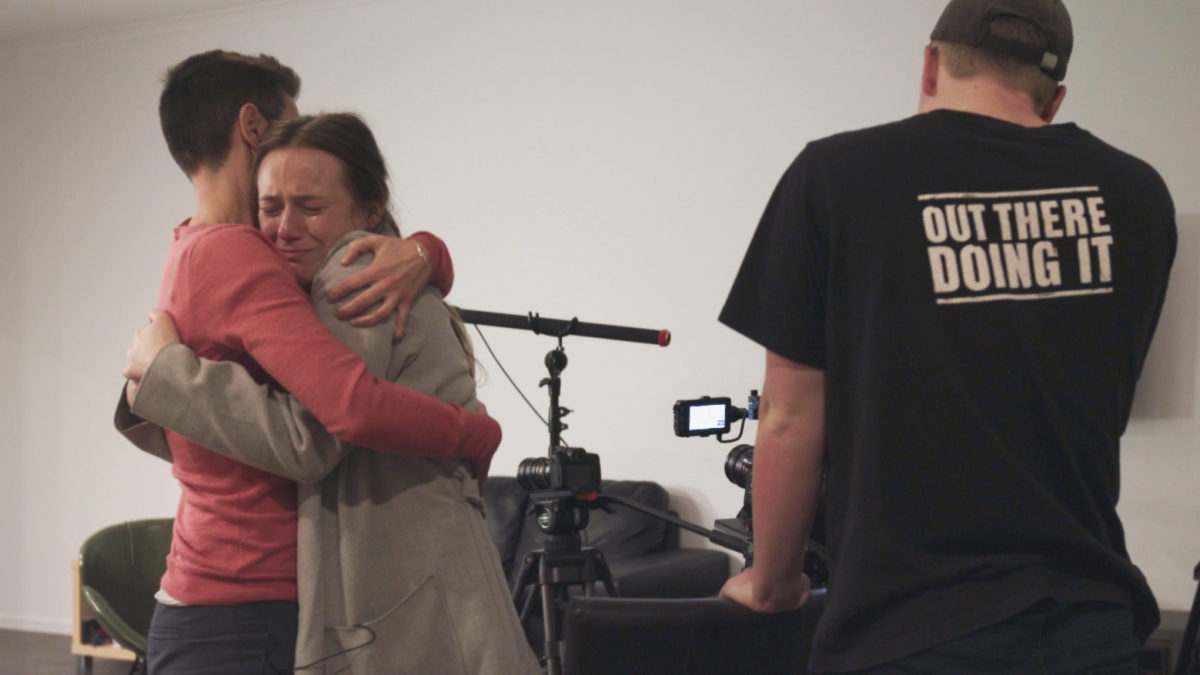[Warning: This story talks about suicide.]
The very first time it happened, I was sitting in my bedroom at home, while my mum watched TV a few metres away through the wall. I was overwhelmed by feelings of hopelessness. I felt worthless and like I was a burden to everyone who knew me.
As I started to feel dizzy and sick from what I’d done, I freaked out. I ran into my mum’s room and told her what had happened. And so that also became the first time I had to be taken to hospital to be treated for the effects of attempting to take my life.
You might be thinking I am an extreme case. But, sadly, that’s not true. I was just an average Kiwi kid, growing up in a single-parent family in a small town. I faced the same challenges many of our children face—bullying, fatherlessness, lack of self-confidence.
Every year in New Zealand, half a dozen or more kids aged under 15 take their own lives—and there will be many more than that who attempt it, and even more again who seriously contemplate it. It’s a fact that New Zealand has one of the worst youth-suicide rates in the developed world. It’s not just young people, either—our overall recorded suicide rate for 2018–19 was the highest since records began.
Over the next eight years, I would try to take my life another 13 times—coming pretty close a few times. I’ve been found unconscious, talked down by police, physically restrained, hospitalised, put in a psychiatric hospital under a legal order, and still I tried again and again to take my life.
People often ask me if I actually wanted to die every time that I was suicidal and the honest answer is no. When I was younger, I was suicidal because of external situations and things that had happened to me, and the suicide attempts were often driven by thoughts like, “I don’t want to die but I can’t keep living like this and so this seems like the only option.”
However, as I got older and my fear of being abandoned started coming out, my suicidal tendencies switched to really wanting to die, because I wholeheartedly believed that everyone would be better off without me. This was because I was living in a constant crisis state, unable to regulate my emotions, meaning that I had more and more hospital visits and crisis-team interventions. The more this happened, the more I felt like I was always on the verge of losing everyone who cared about me and that they really would be better off with me dead.
The isolation response I discussed above is probably a lot that we have taught young people that doing something like this is the only way to get help, that it is the only way to get other people to maybe, just maybe, understand how much pain you are in. Here’s the thing: If someone is willing to play with life and death in order to get the help they are seeking, then we as a society have a real issue.
I remember one night I had spent about four hours crying in my bedroom, writing suicide notes. In all honesty, I can’t actually remember what triggered me this day, but I do remember the internal battle. I didn’t want to die, but I was in so much pain. Yet I felt I couldn’t ask for help. I didn’t know how to just pick up the phone and say “I’m struggling”, because when I was younger, saying something like that just got you pushed aside with a “You will be fine”.
I was so overwhelmed by my emotions that I just got in my car and drove to a cliff near my house. I got out of the car, climbed the barrier and sat on the edge. Half of me wanted to jump, half of me wanted to get help. Now, I know I could have just reached out when these emotions and thoughts first kicked in, but I didn’t know how to, so instead I sat on the edge of this cliff for about 20 minutes.
Eventually I decided to pick up the phone and messaged my friends, Wayne and Libby, saying I was on the edge of this cliff and I didn’t know what to do anymore. After talking to them on the phone for about half an hour I had calmed down a bit and managed to walk back to my car.
I now know that I could have called them right at the beginning of the day to say I was feeling bad, and they would have been there just as much as they were as I was on the edge of the cliff, but my past hadn’t taught me that that would happen.
As part of my recovery, Wayne, Libby and Esther, as the people closest to me, started to help me retrain my brain—to change the way I thought and reacted to things. This was hard, because letting them in to this extent meant I still spent a lot of time being terrified that they would get up and leave. Every time I trusted them a little bit more put me at more risk of being hurt. But let me tell you this—they are all still here.
How to talk to someone struggling
- Ensure you do it in a loving, non-judgemental way—then try to do something afterwards that is not related to the conversation, so that they can understand that you still care.
- Show them that these actions do not define them as a person, but are simply a result of childhood brokenness and fears that can be overcome.
- Talk in a safe environment, whether it be your house, their house or the hospital.
- Don’t go in full blast asking them questions—keep it casual at first to help them bring their walls down and remind them that you love them.
- Reassuring people that you don’t hate them and will not leave them is vital.
- Being able to talk about a future event you could do together will help the person feel like you are not about to walk out of their life for good.
- These conversations are hard, but can be so worth it if they are done with love.
The girl on the bridge
The award-winning documentary The Girl on the Bridge features 22-year-old Jazz Thornton, who survived multiple suicide attempts and is now taking on a system she believes is failing her generation, including founding her own charity to support young people struggling as she once did.

Edited extract from Stop Surviving Start Fighting by Jazz Thornton, published by Penguin, RRP $32.99
If you or someone you know needs help, contact:
Lifeline: 13 11 14 Australia | 0800 54 33 54 New Zealand
How helpful was this article?
Click on a star to rate it!
5 / 5. 1
Be the first to rate this post!
Jazz Thornton
Related posts
Subscribe
Receive personalised articles from experts and wellness inspiration weekly!


